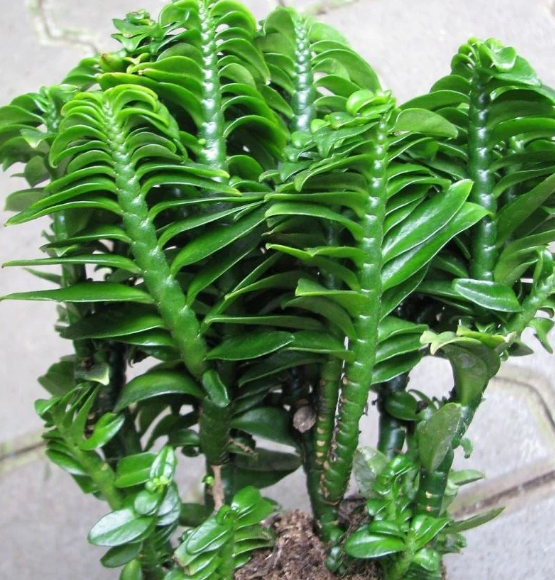Pedilanthus Green Plant
Pedilanthus green is a hardy, zigzag-stemmed ornamental plant known for its drought tolerance, ease of care, and air-purifying properties, with limited medicinal uses in traditional healing.

Habit
Perennial
Height
2–4 ft
Growth
Moderate
Soil
| Well-drained sandy or loamy soil |
Shade
Moisture
Low to Medium
Edible
No
Medicinal
| Yes (used in traditional medicine, but latex is toxic) |
Origin
Tropical Americas
Climatic Condition
Tropical/Subtropical
Temperature (°)
20–35°C
Humidity (%)
40–60%
Potting media
Peat + Perlite
Fertilizers
Balanced NPK (10:10:10) or cactus fertilizer
Watering
| Regular watering; keep roots moist (in water or soil) |
Plant Weight
Approx. 200–500g (based on size)
Flowering Time
| Seasonal (Spring to Summer) |
Soil Ph level
6.0–7.5
Water Ph level
6.5–7.5
Soil EC
1.0–1.8 dS/m
Yield Per Plant
N/A (ornamental use)
NPK ratio
10:10:10
life Span
7–12 years
Health Benefits
Purifies air and has ethnomedicinal use (anti-inflammatory, though toxic if ingested)
Suggested Grow Media or Potting Mix ?
50% peat moss, 25% perlite, 25% coarse sand
Suggested Fertigation/Fertilizers
Fertilize monthly during growing season with balanced fertilizer
Common Diseases and Remedies
Root Rot, Leaf Spot, Powdery Mildew, Mealybugs, Aphids.
Wilting with soft, mushy roots, Dark brown to black spots with yellow halos on leaves, White powdery coating on leaves, White, cottony clusters on stems and leaves, Tiny insects with sticky residue on leaves.
Improve soil drainage, avoid overwatering, Remove and destroy affected leaves, improve air circulation, Neem oil, sulfur sprays, Insecticidal soap, neem oil, Insecticidal soap, neem oil.
Fungicides with mefenoxam, Fungicides with chlorothalonil, Fungicides with myclobutanil, Insecticides with imidacloprid, Insecticides with malathion.

